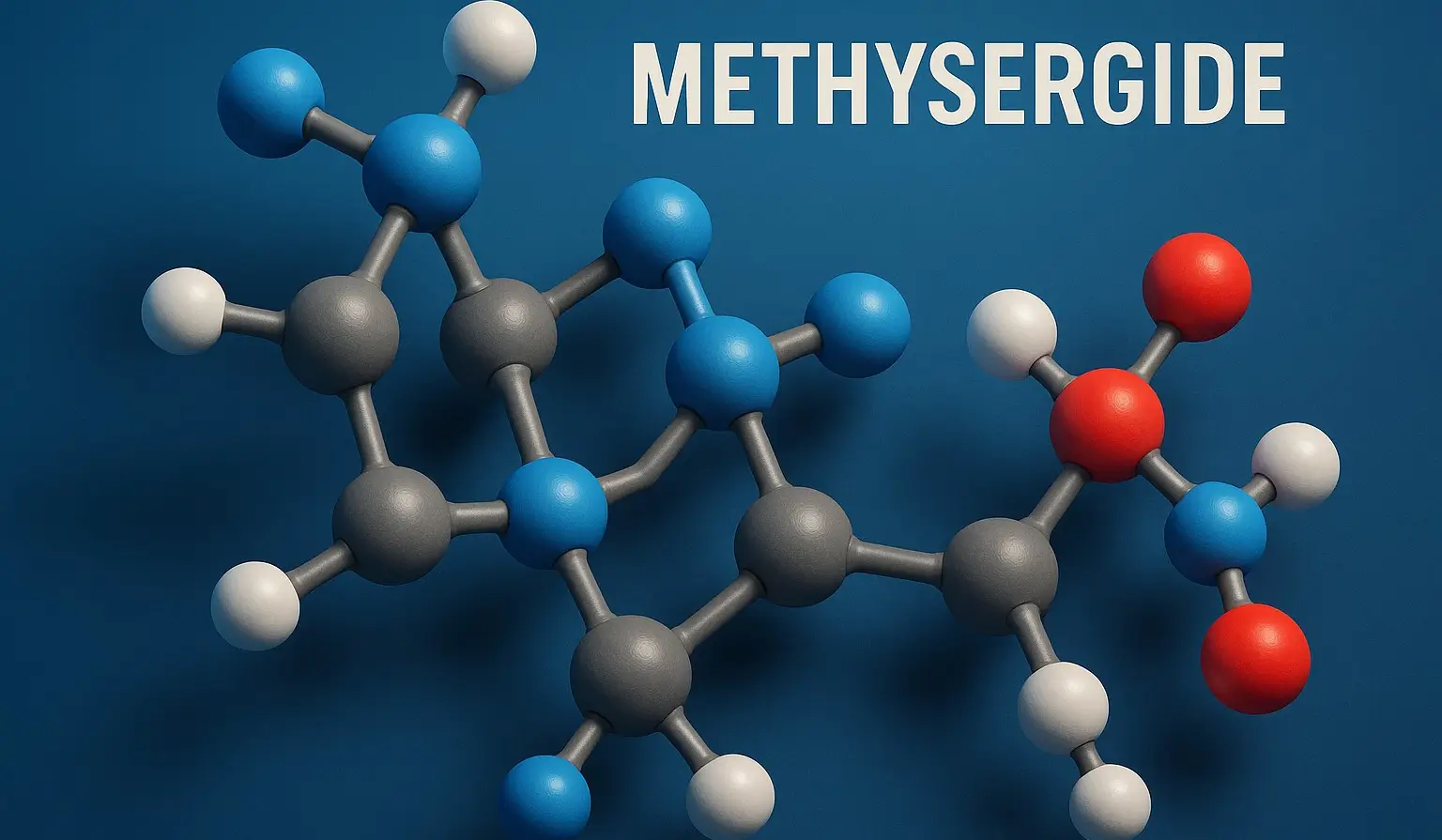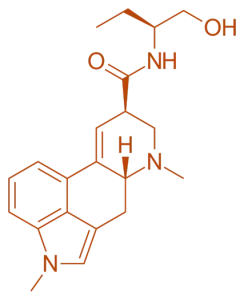Methysergide is a synthetic ergot alkaloid derivative that acts primarily as a serotonin receptor antagonist. It has been used in the prevention of migraine headaches and cluster headaches, although its use has declined due to concerns about long-term side effects, particularly retroperitoneal fibrosis.
Chemical Structure & Formula:
- A lysergamide derivative closely related to lysergic acid, featuring an ergoline skeleton with methyl substitution.
- Approximate Formula: C₂₁H₂₁N₃O₂

Mechanism of Action:
- Primarily acts as an antagonist at 5-HT₂ (serotonin) receptors, with additional activity at dopaminergic and adrenergic receptors.
- Modulates serotonergic neurotransmission to stabilize vascular tone and prevent migraine-associated cascades.
Side Effects of Methysergide:
- Gastrointestinal upset and nausea
- Dizziness
- With long-term use, there is a risk of fibrotic changes (retroperitoneal, pleural, or cardiac valve fibrosis)
Clinical Uses of Methysergide:
- Used prophylactically to reduce the frequency and severity of migraine and cluster headache episodes.
Click Here to Watch the Best Pharma Videos


